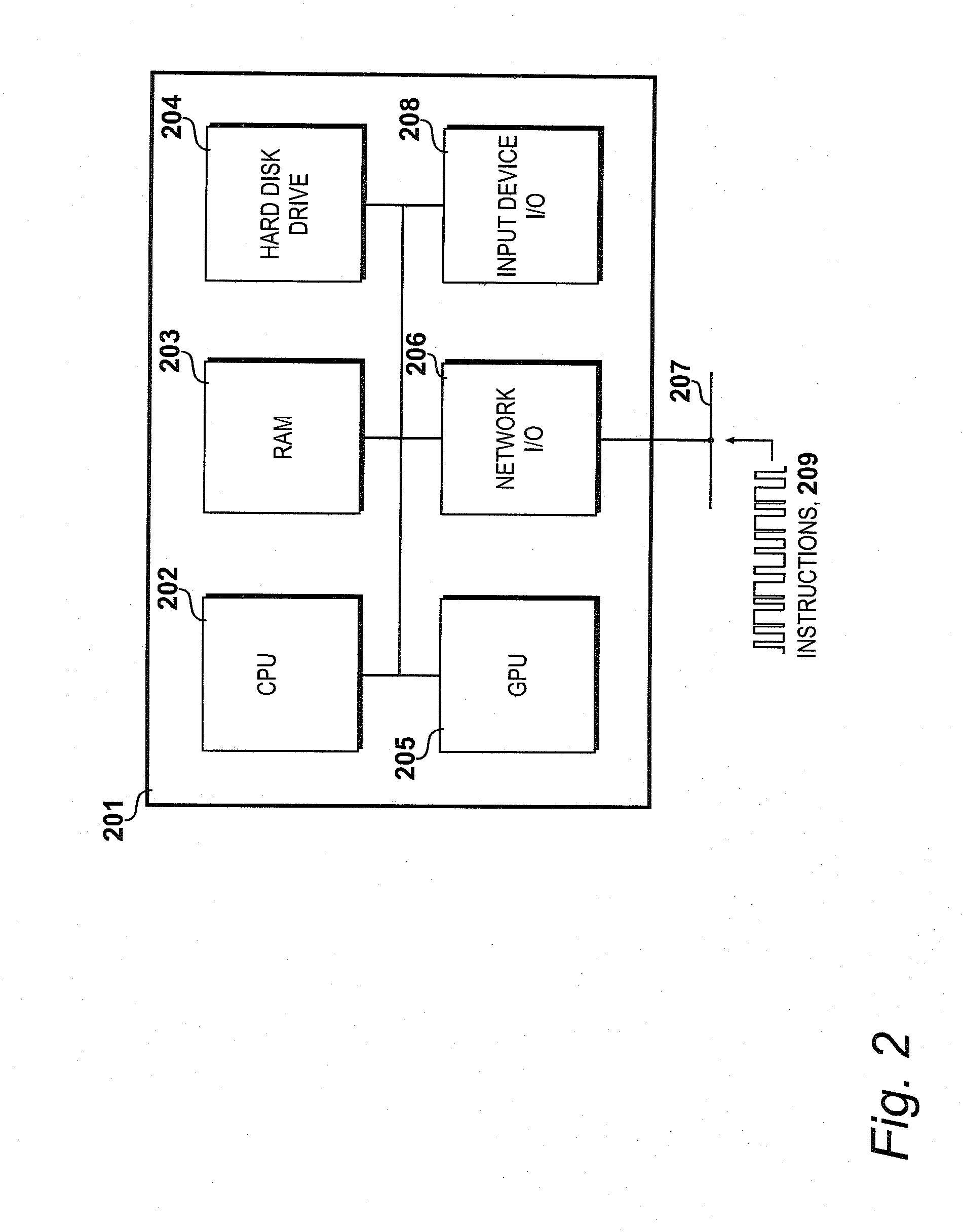Preparing a Polygon Mesh for Printing
a polygon mesh and printing technology, applied in image data processing, sport apparatus, video games, etc., can solve problems such as physical realizability, problems such as problems, and objects with zero thickness,
- Summary
- Abstract
- Description
- Claims
- Application Information
AI Technical Summary
Benefits of technology
Problems solved by technology
Method used
Image
Examples
Embodiment Construction
FIG. 1
[0028]The present invention seeks to solve the above-mentioned problems in the state of the art by providing a processing pipeline for the conversion of 3D meshes into a form that can be printed by additive manufacturing. The pipeline is shown generally in FIG. 1, in which a 3D model of an object in the form of a mesh 101 is to be provided as the input. In the present example the object will be easily recognized by those skilled in the art as a mesh of the Utah teapot, albeit with a major flaw in that it has no defined base. The mesh is therefore not directly printable, and requires a degree of processing before it can be printed by additive manufacturing.
[0029]In addition, the polygons that make up the mesh, which in the example shown in FIG. 1 are quads but could be other primitives such as triangles or patches, form an object which is distinctly angular. These problems are not usually an issue for a 3D object when it is rendered in, say, a videogame engine, due to the rende...
PUM
| Property | Measurement | Unit |
|---|---|---|
| shell thickness | aaaaa | aaaaa |
| distance | aaaaa | aaaaa |
| signed distance field | aaaaa | aaaaa |
Abstract
Description
Claims
Application Information
 Login to View More
Login to View More - R&D
- Intellectual Property
- Life Sciences
- Materials
- Tech Scout
- Unparalleled Data Quality
- Higher Quality Content
- 60% Fewer Hallucinations
Browse by: Latest US Patents, China's latest patents, Technical Efficacy Thesaurus, Application Domain, Technology Topic, Popular Technical Reports.
© 2025 PatSnap. All rights reserved.Legal|Privacy policy|Modern Slavery Act Transparency Statement|Sitemap|About US| Contact US: help@patsnap.com



